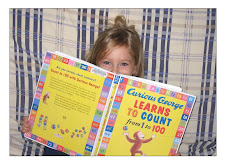
Bibliographic Information
Karen, Tom. and Kiki (ed.). Illus. by Matt Frost. ANGST! TEEN VERSES FROM THE EDGE. New York, NY: Workman Publishing. ISBN: 9780613492744.
Summary and Analysis
Oh, the drama felt as a teenager! Sometimes overly dramatic, other times openly honest. This collection includes all the typical issues faced during those tough years: friends, drinking, insecurities, smoking, parents, and hurt feelings. Not only will teenagers find parts that speak to them, but so will some adults, especially those who are parents to teens or work with teenagers. Topics are easy to relate to as they are the focus of most days for a typical teen. Topics such as crushes, joys, disappointments, and identity are mentioned poem after poem - all of which are written by teenagers which is probably why they are straight to the intended point, or straight to a harsh statement. Difficult topics are not lightly addressed or phrased in a politically correct way as they probably would be had this been a collection of poems written by adults FOR teenagers. Instead, these are true thoughts from teenagers for teenagers. It really is a remarkable collection and there are some very good - and sometimes troubling - poems included. (I am requesting my public library purchase this title.)
Poems range from humorous and self confident speakers to sad and self loathing ones. Most question life, friends, themselves, or experiences with so many open ended questions thrown into the poetry that these are sure to strike a chord with any teenager who reads them. Some focus on very important issues (harassment) and feelings while others show the joy and silliness that can be found among friends and school and be expressed in poetry.
Highlighted Poem
The Whinings of a Lower-Middle Class White Girl
you're bitter
because I have money
from my parents
with their credit cards
bitter because
if I'm hungry - I eat
and if I'm cold,
I put on more clothing,
or go inside
because I can afford
to buy the stupid crap
it took you decades and
seconds to learn and make
because in all this,
I disrespect my parents
and in all this,
I think I am without.
yes, you see,
I am bitter too.
I am bitter
like the rest of my sort -
because my hips are too wide
and because
I don't have enough friends
or that one special person
yes, because I won't
be valedictorian
and also because
my parents divorced ...
and remarried
because I look at myself
and see something ugly
and no one else
has told me different
bitter
to the core
because I am
a stupid, sheltered
American tourist,
and we all want more
than what we have
or maybe it's just me
but goddamn,
do I wish I could
forget this adolescent nonsense.
Connections
Readers could find a poem focused on any emotion in this collection. If focused on two opposite feelings, a reader could then review the similarities and differences between these feelings to show that no matter the topic or poetry form, there are elements that are similar between different poems (such as feeling connected to poetry after reading it). Obviously this collection could lead teenagers to write their own poetry to create a class or personal collection. Other connections can be linked to this collection as well, such as finding poetry in other subjects. For example, in Chem 101 (Laboratory Love) all the typical feelings one experiences during a crush are rhymed with chemical elements and science terms. It is very clever and would act as an example for older children of how all topics can be portrayed in poetry - even chemical combustion.





















